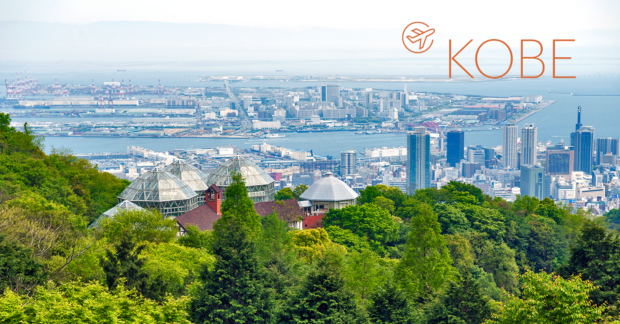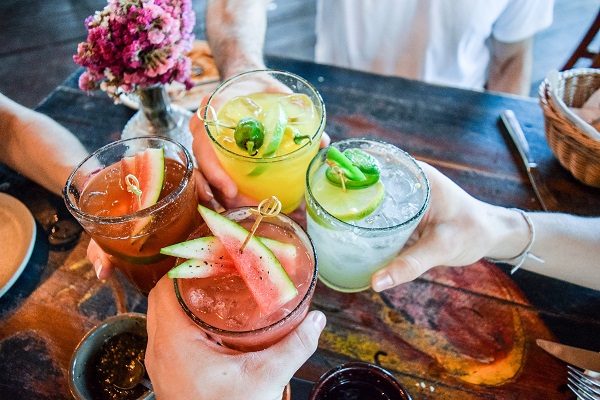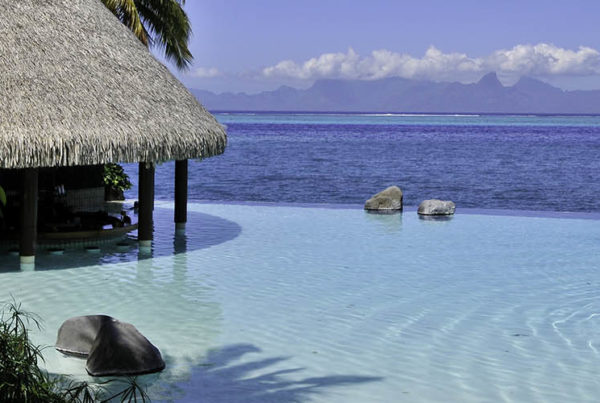Nestled between the Kobe-Hyogo Port and the Rokko Mountains, Kobe is one of the most popular sightseeing cities in Japan. The ancient city blends natural beauty with modern architecture and boasts a flourishing culture influenced by its bustling international port.
Whether you’re in Kobe for a conference, a weekend getaway or passing through on an extended vacation, if your stay is limited you’ll need to plan accordingly.
To get the most out of your 72 hours in the city, use this day-by-day guide and then search for IHG hotels in Kobe to help you plan your next trip.
Day 1: Kobe sightseeing
Mount Rokko
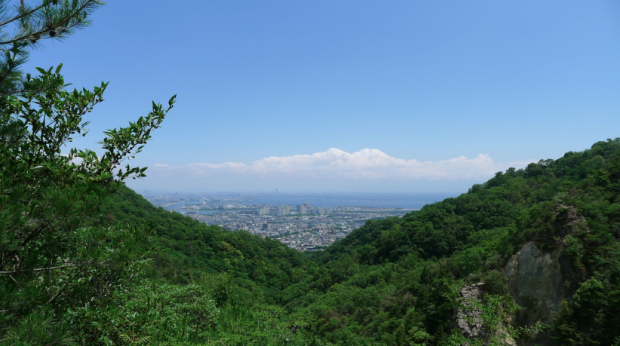
Source: Flickr
Make your first day in the city count by taking in the majestic beauty of Mount Rokko and viewing the expanse of the city. The best times to visit Mt. Rokko are during the summer and fall months from 10 a.m. to 4 p.m. daily.
During summer and fall, temperatures in the city are warmer while the mountain air is cool and refreshing and the landscape is at its most enchanting—hosting beautiful blooming flowers or vibrant autumn colors. Bring water to avoid dehydration and a light jacket for the colder mountain temperatures.
You can access Mt. Rokko via cable car. If traveling by subway, first from Sannomiya Station, take the Hankyu Kobe Line to Rokko Station. From Rokko Station, take bus No. 16 to the base of the Rokko Cable car.
Allow yourself several hours to hike and explore on the mountain. Mt. Rokko features a botanical garden, the International Music Box Museum, two observatories, multiple lookout areas and restaurants.
Arima Onsen
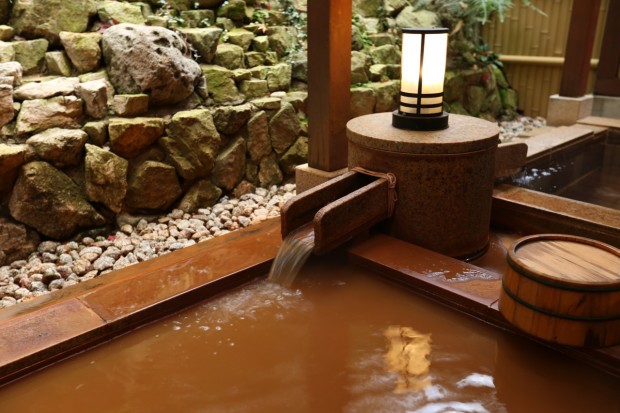
Source: Flickr
After all that hiking and sightseeing, you’ll definitely be in the mood to relax. Spend your late afternoon and evening relaxing in the hot spring baths of Arima Onsen when crowds tend to be smaller.
A short cable car ride from the top of Mount Rokko, Arima Onsen is one of the top places to visit in Kobe. People come from all over the world to soak in the city’s natural hot springs, which are rumored to have physical and spiritual healing properties.
There are two public bathhouses located in Arima Onsen, both of which have separate spaces for men and women. If you plan on soaking in one of these bathhouses, note that only nude bathers are permitted and towels are available but for an additional fee, so consider bringing your own.
Arima Onsen is best explored in the summer or winter months. During the summer, festivals and geisha dances adorn its tiny, ancient streets. In the winter, the temperature drops and a dusting of snow beautifully contrasts with the rising steam and heat of the hot springs.
Day 2: Top things to do in Kobe

Source: Flickr
Kitano-Cho
Today, spend some time getting to know Kobe’s local attractions. First, visit Kitano-Cho and the Kitano Ijinkan—the European-style dwellings, museums and shopping district.
Kitano-Cho is a popular place for bars, nightlife and dining. If you want to avoid crowds, it’s best to visit this part of the city in the morning and early afternoon. The Kitano-Cho is relatively small and can be explored on foot in one to two hours, especially during summer and fall.
Temperatures during this time of the year are more pleasant for foot traffic and you’ll get to see the summer and autumn colors that decorate the city. To get to the Kitano-Cho district it’s a 15-minute walk north from Sannomiya Station or 10 minutes west from Shinkansen at Shin-Kobe Station.
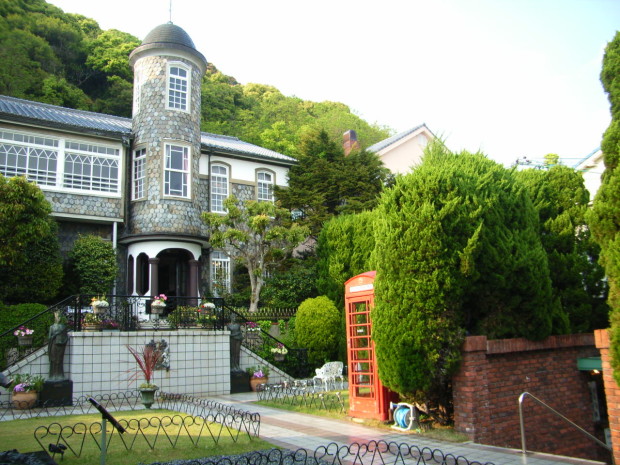
Source: Flickr
While you’re in the Kitano-Cho, be sure to buy a combination museum pass that allows you to tour through several of the Kitano Ijinkan. These European-style houses once belonged to some of the most successful merchants in Kobe and offer a look at the various cultures that have shaped the city overtime.
Ikuta Shrine
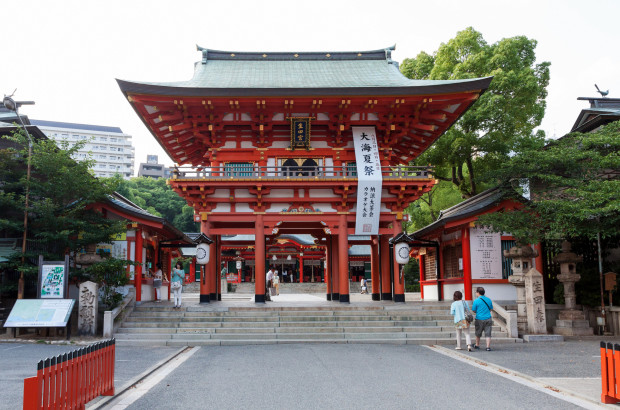
Source: Flickr
After a morning or early afternoon in Kitano-Cho, it’s only a short walk to one of the most notable Kobe tourist attractions—the Ikuta Shrine. Head southwest from the Kitano-Cho for 10 minutes and you’ll find the shrine on the right side of Ikuta Road.
Entry is free and you can explore the entire area in just one to two hours. On weekends, the shrine may be busier due to prayer services, blessings and weddings, so to avoid crowds plan to visit during the early afternoon.
The Ikuta Shrine is one of the oldest structures in the country and features traditional Shinto architecture. The area surrounding the shrine creates a peaceful and serene backdrop for reflection on this piece of history in the middle of bustling city.
Wakkoqu
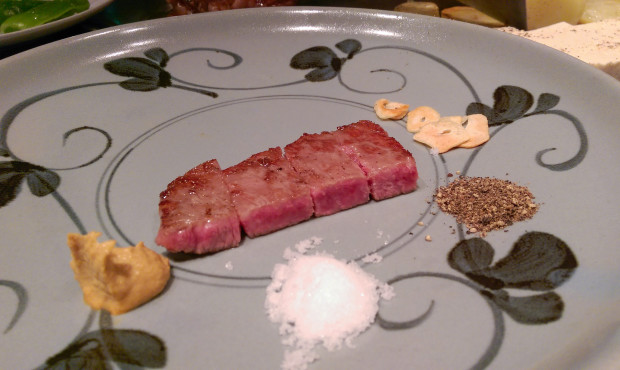
Source: Flickr
For an early dinner, you need to eat one of the must-try foods in Kobe—Kobe Beef—at Wakkoqu. Dining space fills up quickly for dinner, so consider making reservations ahead of time to avoid the wait and ensure you can get a table.
The restaurant has two locations in Kobe, one in the European-influenced area of Kitano (which you’re already familiar with) and the other by Shin-Kobe Station. The location near Shine-Kobe Station is a 10-minute walk up Kitanozaka from Sannomiya Station.
At Wakkoqu you get quality meats, vegetables and a personal chef who cooks it all for you at your table. The restaurant creates a great atmosphere for socializing and hosting larger groups.
Day 3: Kobe tourist attractions
Akashi Kaikyo
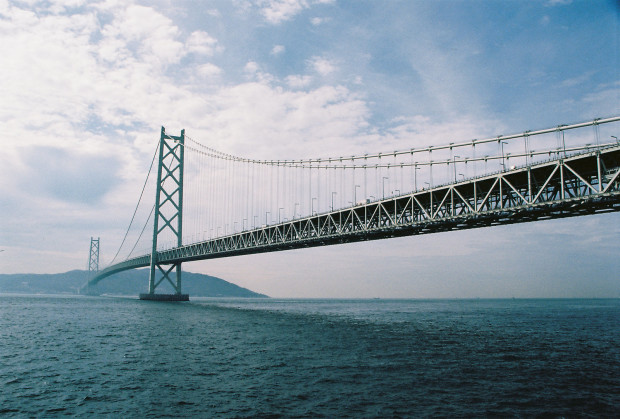
Source: Flickr
Start your third and final day in Kobe with a visit to Akashi Kaikyo, the longest suspension bridge in the world. The bridge is busiest on weekends, and guided tours are only offered two times a day, Thursdays through Sundays. To avoid overcrowding it’s best to see this attraction early.
The Bridge Exhibition Center and the Maiko Marine Promenade are a short walk from Maiko Station on the JR Sanyo Line or Maiko-Koen Station on the Sanyo Railway Main Line. Plan to spend at least three hours at the bridge, especially if you plan on taking the guided tour.
The tour at the Akashi Kaikyo is only presented in Japanese, but you won’t need to understand the language to appreciate the breathtaking views from one of the bridge’s towers. As far as when to see the best views and enjoy the nicest temperatures from the bridge, visit in the summer.
Meriken Park/Harborland

Source: Flickr
After a morning on Akashi Kaikyo, you can enjoy food, shopping and fun at Meriken Park and Harborland. A ferry or car can take you from Akashi Kaikyo to Meriken Park. From downtown Kobe, Meriken Park is a 10-minute walk south of Motomachi Station or across the sightseeing cruise terminal from Kobe Harborland.
Meriken Park features amusement park rides, including a Ferris wheel, rollercoaster and carousel. If you’re looking to relax after your bridge-walking tour, it has plenty of good seating areas adorned with modern steel structures and sculptures.
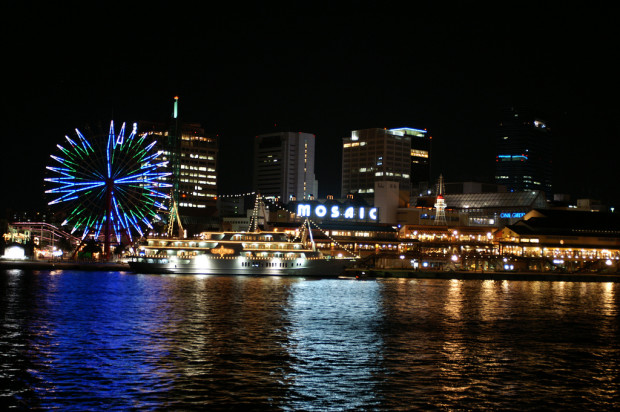
Source: Flickr
When you’re ready for lunch and shopping, the commercial complex within Meriken Park—Harborland—features two shopping centers, Umie and Umie Mosaic, both of which house numerous retail spaces, dining options and boutiques. If shopping isn’t your thing, Meriken Park is home to two other popular Kobe tourist attractions, the Kawasaki Good Times World Museum and the Kobe Maritime Museum.
Cat Café Nyanny

Source: Flickr
With your trip rapidly coming to an end, it’s time to grab a nightcap and dessert. Cat Café Nyanny is a short 15-minute walk northeast from Meriken Park or a two-minute walk from Kobe Motomachi Station.
Nyanny is home to a tribe of friendly felines with whom you can play with, pet and cuddle. While the snuggles and nuzzles are free, admission to Nyanny is not. You’ll pay for the first hour of your visit, plus any food or drinks and for every half hour after. Lucky for you, there are no peak hours at Nyanny and the café is open until 10:00 p.m. Relaxing at a cat café is the perfect way to unwind after a three-day tour of the city.

